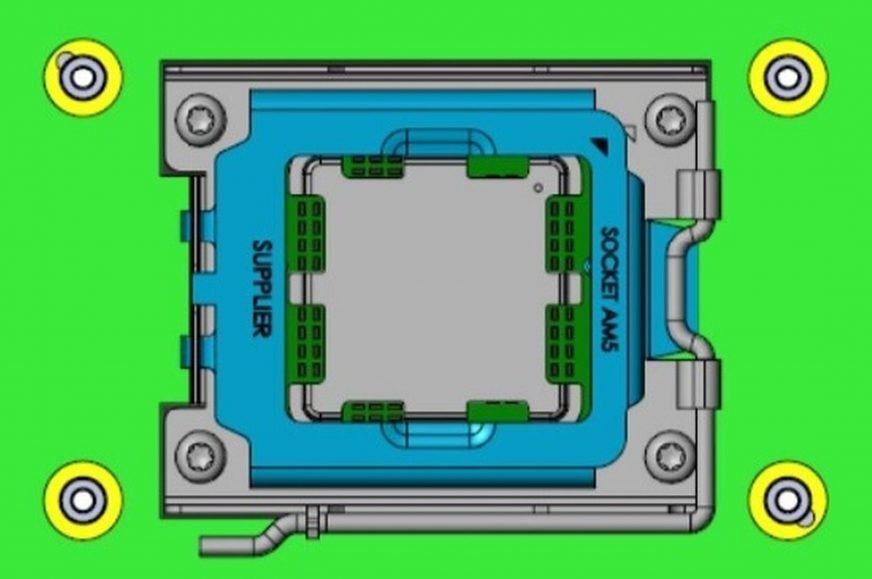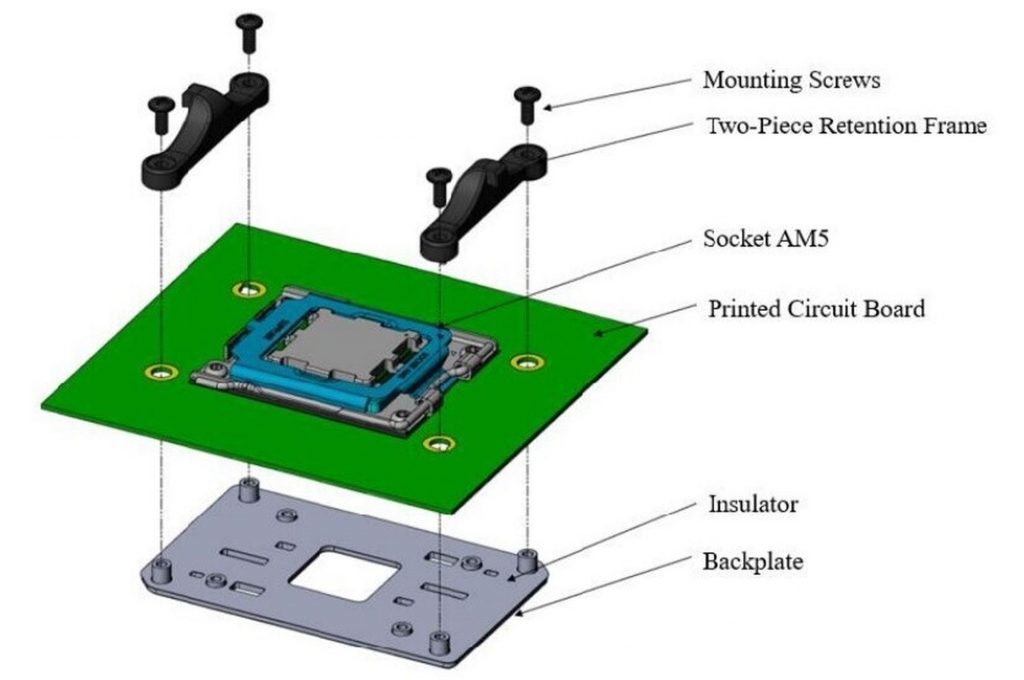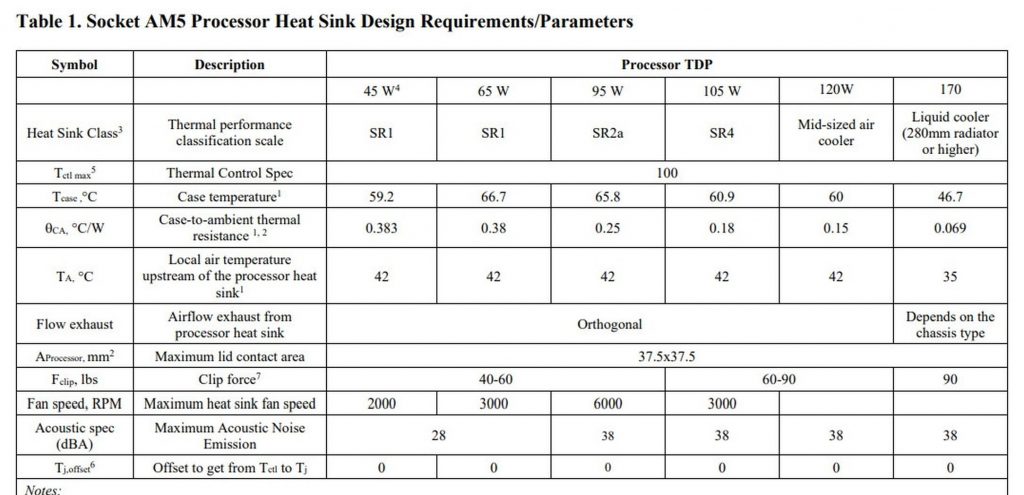Rumoured AMD AM5 socket specifications have come up
It seems that CPU coolers compatible with AMD AM4 will also fit nicely on the upcoming AM5 socket. And that’s with no modifications or the need for new components. This is indicated by an information leak from the technical documentation with details about the future AMD socket. Its construction changes significantly and is therefore particularly remarkable that the same range of mounting holes for coolers and other hardware is maintained.
It has long been known that the next generation of AMD processors with the 5 nm Zen 4 architecture will use LGA contacts instead of PGA. Simply put, after a long time, AMD will drop the pins on the processor, which will be moved to the socket and there will be contact pads on the CPU itself. This, of course, means a significant impact on the construction of the sockets that we use with AMD now. The new ones will be structurally more similar to the current Intel processor sockets.
Not only the pins in the socket, but also the security latch that protects the processor from falling out. The first renders of the AMD AM4 socket, together with a Raphael processor, appeared at the beginning of the month. But now news has spread on the Internet, which illustrates the situation about the socket, as far as the motherboard is concerned, and we also know some dimensions. This is from materials posted on Twitter in a post by a user nicknamed TtLexington.
if you have am4 computer cooler
maybe you can use if for am5! pic.twitter.com/sMnM5Fvzq4
— Ulysses (@TtLexington) August 17, 2021
The AMD AM4 socket is included on the renders, also with some dimensions. However, the main one—the spacing of the holes—is missing. Proportionally, however, the individual mounting holes correspond to the condition on the AM4 socket. Of course, there is also the possibility that they will be shifted a little, for example, more apart. But there would probably be no reason for this, and most importantly, the proportional calculations also match the size of the processor IHS, which according to the available data from the leaked document should not change either and keep the current 37.5 × 37.5 mm.
Backplate should continue to be part of the motherboards, to the shorter sides of which, on the other hand, holders with a handle will be attached to hold the clip of smaller coolers. AMD stays loyal to the usual system in this regard, and you don’t have to worry about push-pin coolers similar to those from Intel.
The probability that current mounting systems of coolers can really be used on the AMD AM5 socket is increased by two known dimensions. One concerns the offsetting of the processor’s IHS from the motherboard PCB. This should be at a distance of 7.98 mm (with a tolerance of ± 0.6 mm), as is the case with the AMD AM4.
And the second dimension, in turn, specifies the height difference between the IHS and the backplate thread, which is 4.34 mm. These specifications indicate that there should be no other pressure requirements for mounting systems unless they are redefined by the processors themselves. Recall the significantly thinned PCB substrate of the first processors within the 6th generation of Intel Core processors, where some cooler manufacturers (including Scythe) have extended the pressure-reducing screws after the first major accidents and destroyed CPUs.
In addition to the details about the socket, the TDP values of individual processor classes also appeared in the same document – 45, 65, 95, 105, 120 and 170 W.
From 120 W onwards, a medium-sized tower cooler is recommended (this could correspond to, for example, SilentiumPC Fera 5), and from 170 W on, a liquid cooler with a radiator of at least 280 mm and ideally larger. It is therefore quite possible that the demands on cooling and the intensity of heat dissipation from the IHS will increase again, either due to the quality of TIM (which we believe will improve) or by reducing the chiplets. And maybe a combination of both.














